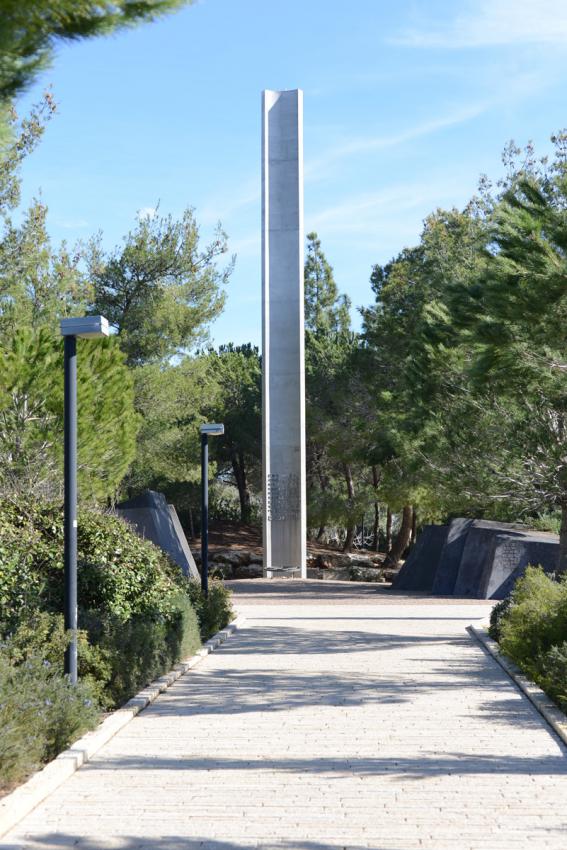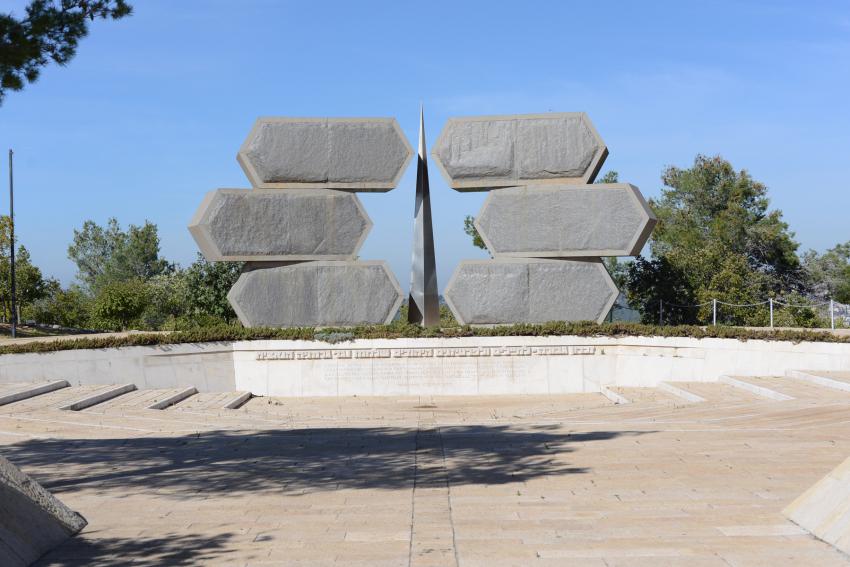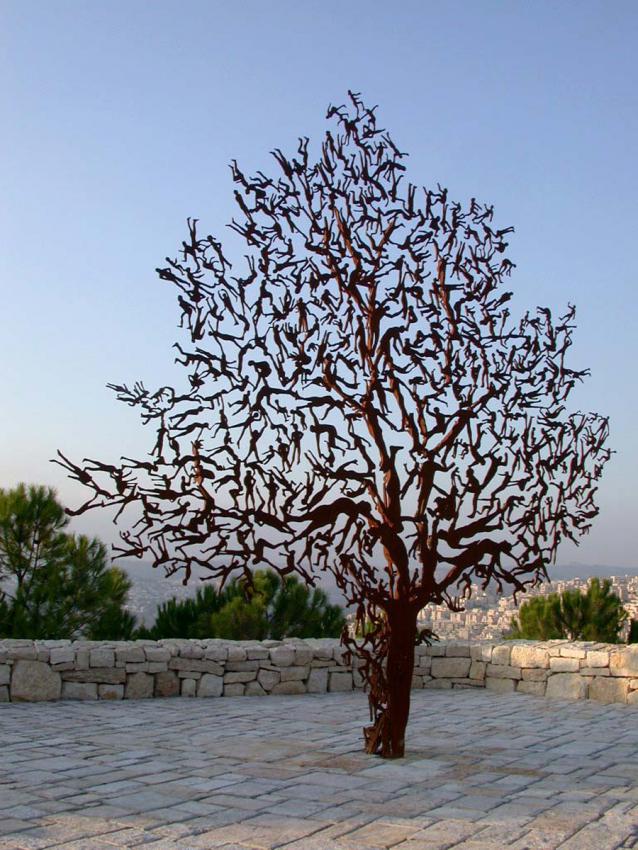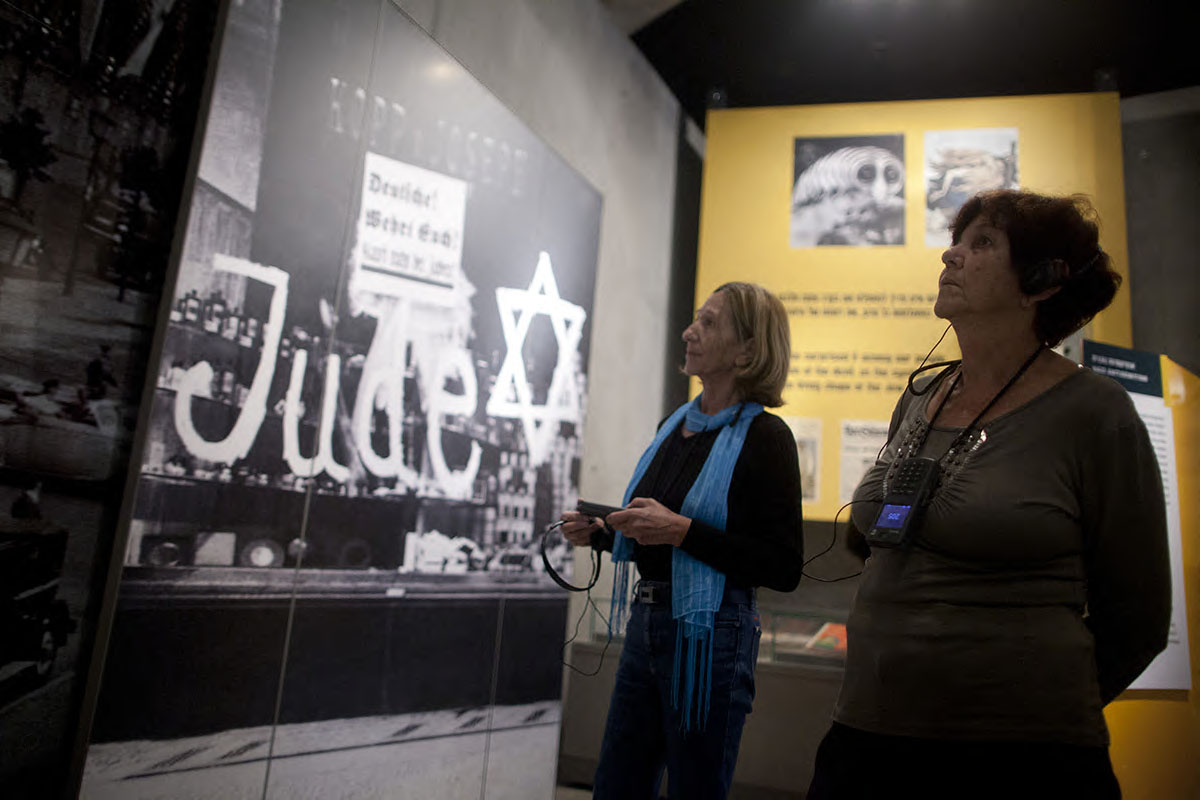
Yad Vashem Art Collection


Yad Vashem Art Collection


Yad Vashem Art Collection


Yad Vashem Art Collection

Sunday to Thursday: 09:00-17:00
Fridays and Holiday eves: 09:00-14:00
Yad Vashem is closed on Saturdays and all Jewish Holidays.
Entrance to the Holocaust History Museum is not permitted for children under the age of 10. Babies in strollers or carriers will not be permitted to enter.

Yad Vashem Art Collection


Yad Vashem Art Collection


Yad Vashem Art Collection


Yad Vashem Art Collection

The 1953 Yad Vashem Law, at the foundation of Israel’s Holocaust Martyrs' and Heroes' Remembrance Authority, affirms that amongst its tasks lies the commitment to commemorate "the valor and heroism of the soldiers, the fighters of the underground and the prisoners in the ghettos, as well as the sons and daughters of the Jewish people who struggled for their human dignity." In this spirit, four monuments were erected at Yad Vashem over five decades, the intent of which was to give presence to "Jewish heroism" on the Mount of Remembrance.
It is interesting to note that the impetus behind the initiative to erect the first monument was the victorious Six Day War, as a gesture by citizens of the State of Israel to the armed warriors who fought during the Holocaust. Three more monuments were built following the Pillar of Heroism, together reinforcing the vision of the founders of Yad Vashem. Together, the monuments reflect a range of attitudes, each one representing its own era in its artistic language on the one hand, and a choice of content on the other, and on the whole manifesting the seemingly intrinsic contradiction between commemorating the tragedy of the Holocaust and heroism. The fact that the conception of the diverse monuments spanned decades constitutes a forceful testimony to the consistent significance of heroism, awarded by Yad Vashem, in the face of changes in present perspectives as regards the concept of valor and the empowerment of the individual who survived as a hero.
In 1967, architect Arieh Elhanani, one of the designers of the Hall of Remembrance, approached artist Buki Schwartz to submit a proposal for a monument commemorating Jewish heroism. "We aspire that this will constitute the last and final point of a visit to Yad Vashem," Elhanani wrote. This guideline dictated the decision to place the monument at the highest location on the site, so that the Pillar of Heroism would be seen from afar. The monument was inaugurated in March 1970, during the first international conference of The Prisoners of the Camps and the Jewish Fighters Against the Nazis. At the center of the monument rises a 21-meter-high pillar, comprised of three arched sections. It bears an inscription composed by Yehuda Leib Bialer, then member of the Yad Vashem Board: "Now and forever in memory of those who rebelled in the camps and ghettos, fought in the woods, in the underground and with the Allied forces; braved their way to Eretz Israel; and those who died sanctifying the name of God." Sculptural walls simulating rocks, which echo the Valley of the Shadow of Death, surround the plaza in front of the sculpture.
As early as 1947, artist Nathan Rapoport conveyed to Mordechai Shenhavi – Yad Vashem early visionary and first director – his plan to build a monument to the Warsaw Ghetto Uprising in Warsaw, at Zamenhof Street, where the Uprising had commenced. In 1948, the plaster model that had been used to cast the monument in Poland was acquired, but the erection of the Jerusalem monument encountered funding obstacles, which persisted for many years after the foundation of Yad Vashem. The renewed initiative to build the monument came from Dr. Yitzhak Arad, then-Chairman of the Yad Vashem Directorate. Yad Vashem donor Leon Jolson, a native of Warsaw and Holocaust survivor, endorsed the proposal. In 1976 the Warsaw Ghetto Uprising Monument on the Mount of Remembrance was inaugurated. It comprises two central elements: the first, a low relief titled: "The Last Journey," depicting Jews being passively led to their murder; the second, the dynamic and heroic "Warsaw Ghetto Uprising" sculpture, representing the heroism of the fighters. Between the two components one encounters the biblical quote "In thy blood, live" (Ezekiel 16:6)—an addition particular to this site. The three elements are placed against the background of a red brick wall, built at the artist's request. The plaza in front of the monument, Warsaw Ghetto Square, is where the annual state ceremonies in commemoration of the Holocaust Remembrance Day take place.
"Following many appeals we received from enlisted fighter organizations and on the strength of our own feeling that it was necessary to underscore the fact that one and a half million Jews waged war against Nazi Germany, we intend to establish a monument commemorating the Jewish soldiers who fought with the Allied Forces' armies," wrote Dr. Yitzhak Arad, himself a fighter in the ghetto underground, with the partisans, and later on in the Palmach. The monument was inaugurated in May 1985, on the 40th anniversary of the victory over Nazi Germany. The proposal submitted by artist Bernie Fink was selected from among 90 entries. In the center of the monument are six granite bricks chiseled in the shape of a hexagon, symbolizing the six million Jewish victims. The composition of the six bricks creates a negative Star of David on the background of the Jerusalem sky, symbolizing Jewish heroism. A metal spearhead cuts upwards through the Star of David, representing the armed fighters. The plaza leading to the monument is designed in the shape of a seven-branched Menorah. At the base of the Menorah, the inscription reads in English, French, Hebrew, Russian and Yiddish: “Monument to the Jewish Soldiers and Partisans who fought against Nazi Germany 1939-1945”. The monument, which was inaugurated in the presence of then-Defense Minister Yitzhak Rabin, is the site of the annual ceremony in commemoration of the victory over Nazi Germany.
Julia and Isidore Karten, z"l, and family were the initiators of the Partisans’ Panorama as well as the donors who led to its installment, in September 2003, as part of the events held to mark the 50th anniversary of Yad Vashem. The Kartens, both of whom were partisans, survived the Holocaust by hiding in Ukrainian forests and were saved together with hundreds of Jews in the same situation. Architect Dan Zur, who planned the site overlooking the Jerusalem forest, suggested that a sculpture be placed there. Zadok Ben-David's entry was selected from among four proposals. The sculpture emulates a natural tree; however at a second glance one sees that its branches are actually comprised of some 600 countenances of men, women and children, who take refuge under its branches up to the treetop. The isolated tree symbolizes the refuge that the forest granted to the partisans. In his letter to the curator, the artist explained, in fact, "Man is a Tree of the Field" (Deuteronomy 20:19) – a novel interpretation to the biblical text representing the power of survival and the hope for growth.
First published in Yad Vashem Jerusalem magazine, #69, March 2013

Thank you for registering to receive information from Yad Vashem.
You will receive periodic updates regarding recent events, publications and new initiatives.

"The work of Yad Vashem is critical and necessary to remind the world of the consequences of hate"
Paul Daly
#GivingTuesday
Donate to Educate Against Hate


Worldwide antisemitism is on the rise.
At Yad Vashem, we strive to make the world a better place by combating antisemitism through teacher training, international lectures and workshops and online courses.
We need you to partner with us in this vital mission to #EducateAgainstHate
The good news:
The Yad Vashem website had recently undergone a major upgrade!
The less good news:
The page you are looking for has apparently been moved.
We are therefore redirecting you to what we hope will be a useful landing page.
For any questions/clarifications/problems, please contact: webmaster@yadvashem.org.il
Press the X button to continue



